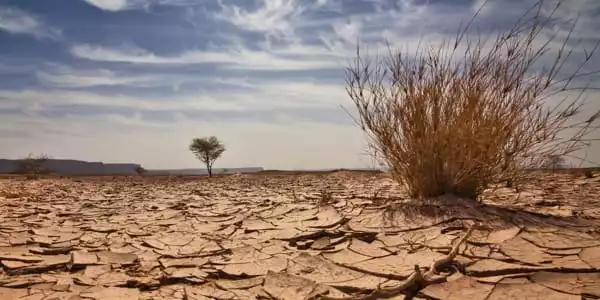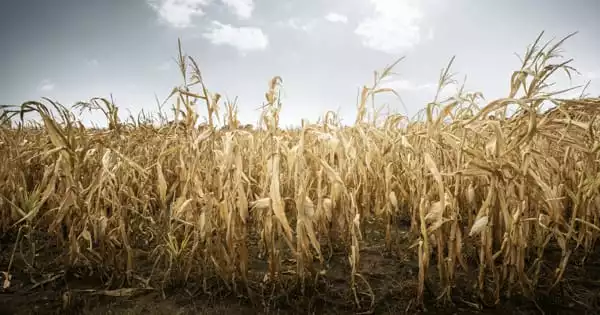New computer simulations predict that if current global warming trends continue, deep changes in growing conditions will affect the productivity of major crops within the next ten years. Maize crop yields are expected to fall by nearly a quarter by the end of the century, while wheat yields could increase by about 17%. Current breadbasket regions will experience severe changes much faster than previously anticipated, requiring farmers all over the world to adapt to new climate realities right away.
“We are seeing that new climate conditions are pushing crop yields outside of their normal range in an increasing number of regions.” Human-caused greenhouse gas emissions raise temperatures, cause changes in rainfall patterns, and increase carbon dioxide levels in the atmosphere. This has an impact on crop growth, and we find that the emergence of the climate change signal, the time when exceptional years become the norm, will occur within the next decade or soon after in many key breadbasket regions around the world,” explains lead author Jonas Jägermeyr, a crop modeler and climate scientist at NASA’s Goddard Institute for Space Studies (GISS), The Earth Institute at Columbia University.
“This means that farmers must adapt much more quickly, for example, by changing planting dates or using different crop varieties, to avoid severe losses while also realizing gains in higher-latitude regions.”
Farmers are all too aware of how weather affects agriculture. Modern methods, techniques, and technologies have increased the productivity of today’s crop and livestock farms, but agricultural success is still dependent on getting just the right amount of rain and just the right amount of heat at just the right time of year.
We are seeing that new climate conditions are pushing crop yields outside of their normal range in an increasing number of regions.” Human-caused greenhouse gas emissions raise temperatures, cause changes in rainfall patterns, and increase carbon dioxide levels in the atmosphere.
Jonas Jägermeyr, climate scientist
Seasonal temperatures are critical in agriculture. What crops can be grown are determined by the length of the growing season, average temperatures, and the timing and severity of hot and cold spells. According to climate models, Canada’s cold season will shorten, resulting in a longer growing season. However, with that potentially good news comes a significant increase in high temperature events and changes in precipitation patterns – particularly the increasing likelihood of flooding and drought in the same year – which will necessitate significant changes on the part of farmers.
Since the 1980s, scientists have been attempting to quantify agriculture’s vulnerability to climate change through impact assessments in order to better understand these vulnerabilities and streamline climate action. The periodic publication of the Intergovernmental Panel on Climate Change (IPCC) reports has piqued the public’s interest and influenced policies around the world. Since then, numerous research studies have been published, quantifying projected climate impacts on agriculture at various spatial scales using various climate and crop models.

Maize yields down, wheat yields up
The team of researchers created the largest ensemble of future yield projections as of today by combining a set of new climate projections and various state-of-the-art crop models. They discovered significant changes in the very near future, as well as across the most important growing regions. Maize is grown in a variety of latitudes, including subtropical and tropical countries where higher temperatures are more harmful than in cooler high-latitude regions.
Maize yields in North and Central America, West Africa, Central and East Asia could fall by more than 20% in the coming years. Wheat, which grows best in temperate climates, may see increased productivity in current growing areas as a result of climate change, including the Northern United States and Canada, as well as China.
Exacerbating existing inequalities
“The data clearly show that poorer countries are likely to see the steepest declines in yields of their main staple crops. This exacerbates already significant disparities in food security and wealth “says Christoph Müller, co-author and Potsdam Institute researcher. Importantly, wheat gains in the North do not compensate for maize losses in the South. Poor countries, as well as the affected smallholder farmers, frequently lack the financial resources to purchase food on the global market. As a result, the anticipated fundamental shift in agricultural production patterns may pose a risk to food security in some regions while benefiting others.
Temperature is not the only factor influencing crop yields in the future. Higher levels of carbon dioxide in the atmosphere benefit crop growth, particularly wheat. It may, however, reduce their nutritional value. Rising global temperatures are also associated with changes in rainfall patterns, as well as the frequency and duration of heat waves and droughts, all of which pose threats to crop health and productivity. “Even in optimistic climate change scenarios, where societies make ambitious efforts to limit global temperature rise,” Jägermeyr said, “global agriculture is facing a new climate reality.”














